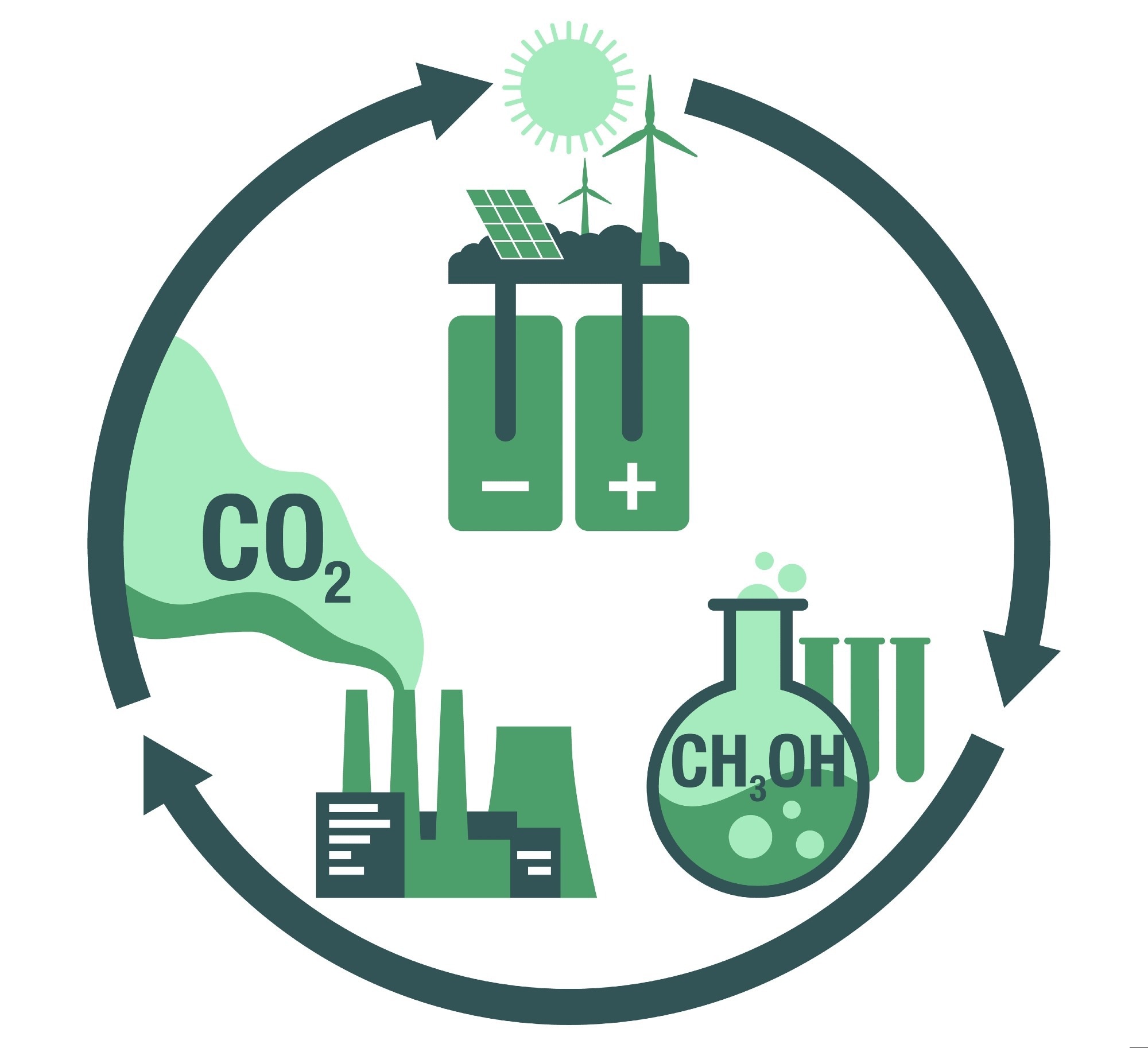In an article recently published in the journal Nature Communications, researchers investigated the challenges associated with the performance of electrochemical carbon dioxide (CO2) reduction techniques like conventional gas diffusion electrodes (GDEs).

Image Credit: Dmitry Kovalchuk/Shutterstock.com
The research team introduced a novel GDE architecture called the hierarchically conductive GDE (HCGDE), which aims to enhance electron transport while maintaining hydrophobicity. The goal was to address ohmic losses that often reduce performance in larger electrodes, enabling stable and efficient CO2 electrolysis on a larger scale.
Advancements in Electrochemical CO2 Reduction Technology
Electrochemical CO2 reduction has gained significant attention for its potential to convert captured CO2 into valuable fuels and chemicals typically derived from petrochemical sources. When paired with renewable electricity, this process provides a way to store energy and offers the possibility of achieving net-negative CO2 emissions through the production of durable products.
Recent advancements in catalysts, reaction pathways, and electrode designs have brought CO2 reduction technologies closer to commercialization. However, despite progress in laboratory settings, including high current densities and selectivity for multi-carbon products, challenges persist in scaling these systems for practical use.
A key component of electrochemical CO2 reduction is the design of GDEs. These electrodes enable the critical interaction between gaseous CO2, the electrolyte, and the catalyst, optimizing reaction rates. While conventional GDEs, such as those made from expanded Polytetrafluoroethylene (ePTFE), are highly hydrophobic, they have poor electrical conductivity. This limitation causes significant ohmic losses, especially as electrode sizes increase, reducing the scalability and efficiency of CO2 electrolysis systems.
Hierarchically Conductive Gas Diffusion Electrodes
In this paper, the authors evaluated the performance of HCGDEs, designed to improve electron transport within the electrode structure. Their goal was to address the limitations of traditional ePTFE electrodes by incorporating micrometric conductive wires that connect the catalyst layer to the current collector. This design enhances electron transport while preserving the hydrophobic properties necessary for efficient CO2 reduction.
Experimental methods and finite element modeling were used to assess HCGDE performance across different scales, focusing on their ability to achieve low cell voltages and high Faradaic efficiencies (FEs) for C2+ products. The experimental setup featured 250-nm thick copper catalysts deposited on ePTFE membranes, with electrode sizes ranging from 0.5 cm² to 50 cm². Electrodes of three sizes (0.5 cm², 2.5 cm², and 50 cm²) were tested in a Membrane Electrode Assembly (MEA) system.
Testing protocols measured FEs and current densities, while finite element modeling predicted performance based on design parameters. Long-term stability tests were also performed to evaluate the durability and efficiency of the HCGDEs under operational conditions, providing valuable insights into their scalability and practical application.
Key Findings and Insights
The study demonstrated that HCGDEs maintained high performance even at larger sizes, achieving approximately 75% FE for multi-carbon products at a current density of 200 mA/cm². This efficiency remained consistent across electrode sizes up to 50 cm². In contrast, traditional ePTFE electrodes experienced a significant drop in performance as their size increased, with ethylene FEs declining from 47% at 0.5 cm² to 29% at 4.2 cm². These outcomes underscored the effectiveness of the HCGDE design in minimizing ohmic losses.
Additionally, incorporating micrometric conductive wires in the GDL reduced ohmic losses and supported consistent performance at larger scales. HCGDEs exhibited good stability, maintaining performance over extended operation periods. Importantly, the conductive wires preserved the hydrophobicity of ePTFE, preventing flooding while improving conductivity. The authors emphasized that maintaining a wire spacing of less than 10 mm was critical for optimizing conductivity and reducing voltage losses.
Applications of Hierarchically Conductive Electrodes
This research has significant implications for advancing CO2 reduction technologies toward commercialization. By addressing challenges in electrode scaling, HCGDEs could enable the development of industrial-scale systems for converting CO2 into renewable chemicals and fuels, thereby supporting sustainability goals and reducing reliance on fossil fuels.
Furthermore, the principles behind the HCGDE design could be applied to other electrochemical systems, such as hydrogen production and energy storage. Improving conductivity while maintaining hydrophobicity presents opportunities to create efficient and stable electrochemical devices across various sectors.
Conclusion and Future Directions
In summary, HCGDEs represent a significant advancement in electrochemical CO2 reduction by addressing key challenges such as ohmic losses and flooding instability that have limited the scalability of traditional ePTFE electrodes. By incorporating micrometric conductive elements into the gas diffusion layer, these electrodes achieved high FEs and low cell voltages, even at larger sizes, paving the way for commercial applications.
Future work should optimize HCGDE designs, explore other materials to improve conductivity and hydrophobicity, and assess their long-term stability under different operating conditions. Scaling up the technology to industrial levels while maintaining performance will also be crucial for successfully commercializing electrochemical CO2 reduction systems.
Disclaimer: The views expressed here are those of the author expressed in their private capacity and do not necessarily represent the views of AZoM.com Limited T/A AZoNetwork the owner and operator of this website. This disclaimer forms part of the Terms and conditions of use of this website.
Source:
Rufer, S., Nitzsche, M.P., Garimella, S. et al. Hierarchically conductive electrodes unlock stable and scalable CO2 electrolysis. Nat Commun 15, 9429 (2024). DOI: 10.1038/s41467-024-53523-8, https://www.nature.com/articles/s41467-024-53523-8